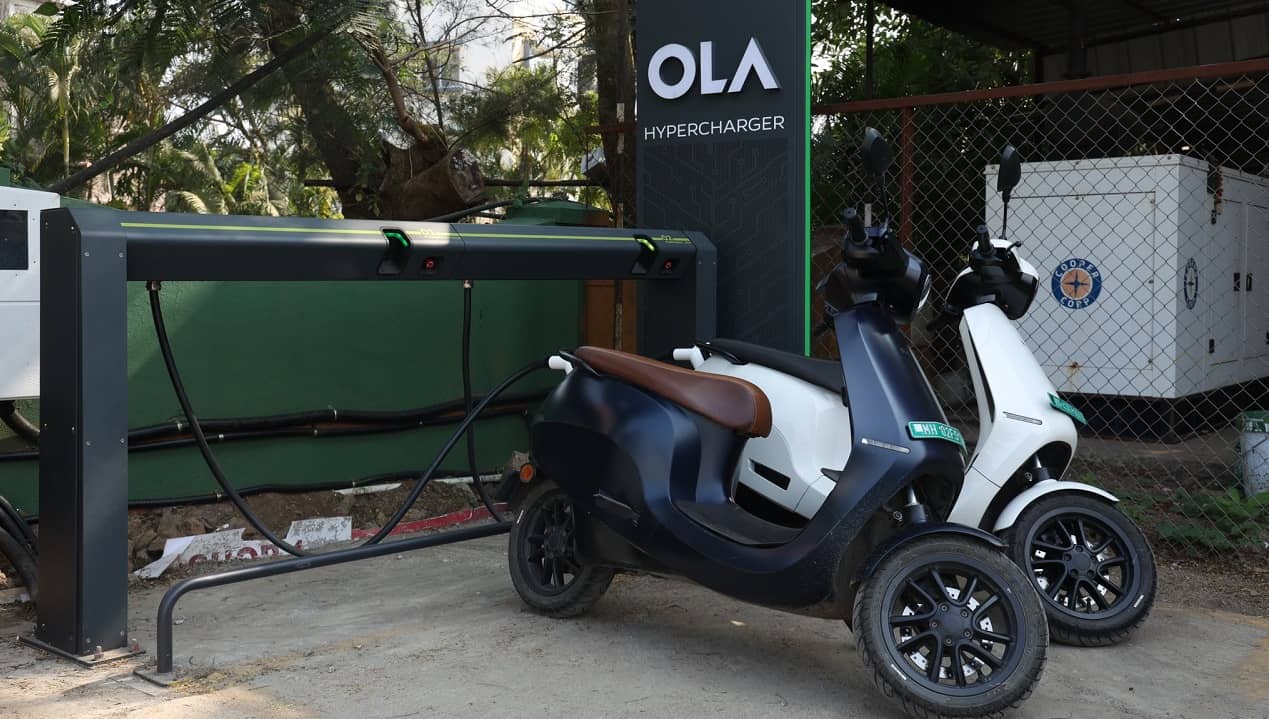Swiggy’s Anticipated IPO: A $15 Billion Valuation in the Making
Ola is disrupting the EV two-wheeler market. Can it become India's Tesla?

Last Updated: 28th December 2022 - 10:37 am
The Indian automobile industry has seen off the worst of the slowdown with car sales picking up, despite a shortage of chips, though two-wheelers are yet to hit the high growth track. While there is a push for electric vehicles all around, four-wheeler makers are not totally convinced the market is ready as there is a lack of suitable charging infrastructure and product prices are deemed far too high by consumers.
But India’s nascent electric mobility market has seen sparks from an unlikely quarter-two-wheelers.
While India is the largest conventional two-wheeler market by volumes, electric two-wheelers comprise around a sixth of the total in the scooter segment this fiscal. A strong push by both the central and state governments for faster adoption of EVs, has led to improved demand outlook for the industry.
Monthly industry sales, which were in the region of 40,000-45,000 this summer, have shot up to over 76,000 units for two consecutive months of October and November. Interestingly, it is not the legacy players Bajaj Auto, TVS and Hero MotoCorp that are leading the EV show. The top two EV companies in terms of sales were not even present a decade ago.
After leading for four months, Okinawa Automotive lost the baton to Ola Electric during the onset of the festival season.
Ola, one of the best funded among its peers, accounted for around 18% of electric two-wheelers sold in the country in the April-November period. What’s more, its market share shot up to 21% in November. In other words, it made one in five electric two-wheelers sold in the country last month. This performance comes from a company that was created just under two years ago.
Ola Electric: The backstory
Ola Electric Technologies and its parent Ola Electric Mobility are the youngest among their major peers. Even though the company commenced deliveries of electric two-wheelers only from December 2021, it is now trying to disrupt the two-wheeler industry.
The initial focus of the company is on the electric two-wheeler segment, with a gradual foray into other automotive segments also planned over the medium to long term. The firm has set up an integrated manufacturing plant in India, with an annual production capacity of around 0.5 million units with plans to ramp it up to 10-million-units over the medium to long term in Krishnagiri district of Tamil Nadu.
With a healthy order book upon launch, the new unit incubated by India’s top cab hailing service Ola, it was able to achieve a relatively healthy ramp up of sales in the first 2-3 months. Then came the semiconductor chip shortages leading to suboptimal utilisation of capacity as the company’s volumes moderated from April.
This led to sharp rise in losses in the first half of the current financial year as heightened electronic procurement and logistics costs affected the bottom-line.
But things are looking up due to easing of semiconductor supplies and healthy demand for its feature-rich products. It immensely benefited from its festive discount of Rs 10,000 on its Ola S1 Pro, which was launched on Independence Day, August 15, at an introductory price of Rs 99,999. In October, Ola Electric launched a third variant of its existing scooter platform, which took the fight right to the doorsteps of legacy internal combustion engine or fuel powered two-wheelers made by legacy brands. The deliveries of the new product are expected to commence from March 2023.
Early last month, Ola crossed the milestone of rolling out its 100,000th scooter from its all-women-run Futurefactory in Tamil Nadu.
Ola Electric's roadmap
Ola has been expanding its direct to consumer (D2C) footprint and claims it is on track to open 100 outlets by the end of this week which would then double by March.
The firm that manufactures the bulk of the components required in-house, giving it greater control over cost and quality, is aiming at a cash break-even over a medium term. It is also looking to set up a battery cell manufacturing facility within a year, which would improve backward integration. Initially the company plans to set up a 1-GwH manufacturing facility and will slowly ramp it up to comply with the government incentive schemes.
The company’s ability to achieve a timely commercialisation of the facility, secure adequate supplies of key minerals, achieve desired localisation levels and the funding mix adopted for various phases of the capacity expansion would play a key role in deciding its future course.
For now, it is well placed. Having secured equity funds of around $652 million over the past three years with the backing of marquee investors like SoftBank, Tiger Global, Matrix Partners and Falcon Edge Capital among others, it has the right financial resources.
It is expected to raise additional equity funding over the medium term to fund expansion plans. This could help it stave off any serious fightback from legacy players who are also getting into the EV bandwagon as also other startups in the field.
The company has benefited from the FAME II subsidy, which accounts for over a quarter of the overall price of its products. As a result, timely receipt of the money from the government remains important, till the firm achieves a reduction in cost of production that lowers dependence on the subsidy.
Ola Electric had subsidy receivables from the government of around Rs 360 crore as of September 30, pushing up its working capital requirements. This has reduced as it received subsidy disbursement of around Rs 259 crore over the past two months.
This has been a bone of contention in the EV industry as the government had held back the subsidy receivables for select players, on allegations of violations of localisation norms required to be eligible for the subsidy. But as the firm increases localisation with its own battery manufacturing, it would be in a sweet spot.
How the firm manages to scale up without any major roadblocks over the next two years would decide whether it can later on try and become a Tesla of India.
Trending on 5paisa
Discover more of what matters to you.
Indian Stock Market Related Articles
Disclaimer: Investment in securities market are subject to market risks, read all the related documents carefully before investing. For detailed disclaimer please Click here.
 Tanushree Jaiswal
Tanushree Jaiswal Ruchit Jain
Ruchit Jain Sachin Gupta
Sachin Gupta




